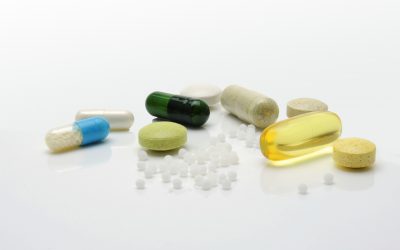Exercise and Fertility: Finding A Happy Balance
Exercise and Fertility: Helpful or Harmful?
Are you thinking of starting to exercise more as a way to boost your health and improve your fertility? Or have you stopped all forms of exercise because you’re scared that it’ll prevent you from getting pregnant? Before you make any changes to your fitness routine, read this first. You might be surprised to learn that some forms of exercise might actually hurt your chances of conception, while other forms may actually be beneficial. With exercise and fertility, the key is finding a happy balance.
With so much conflicting information out there, we’ve distilled the research for you so that you can make a better decision about how to adapt your exercise routines to meet your goals of having a baby.
Weight and Fertility in Women
Being Overweight
Carrying some extra weight around? Well, if you’re trying to get pregnant the natural way or through IVF, better start thinking about working some of it off. Being overweight is associated with decreased rates of pregnancy, even after fertility treatments.
With weight loss and proper exercise, hormonal balance can be restored; this includes reproductive hormones necessary for a successful pregnancy. Weight loss itself also increases pregnancy rates and IVF success.
Moderate physical activity supports weight loss, increases insulin sensitivity, and improves general well-being, all of which are critical in ovarian function and getting pregnant5.
Being Underweight
Being underweight often leads to anovulation (lack of ovulation), amenorrhea (no menstruation), and hormonal imbalances. All of these are related to increased infertility and decreased rates of pregnancy.
So if you are underweight and exercising frequently and intensely, dropping it to a moderate amount is absolutely required for conception. If you are not exercising at all, add some moderate intensity exercises into your routine along with regular nutritious meals.
Exercise and IVF
Less is more! Minimize physical activity to low-impact during the IVF treatment period to maximize rates of success. Higher impact exercises make it harder for the embryo to stay where it’s supposed to, making pregnancy difficult.
A study10 found decreases in treatment success with increased length of exercise (4 hours or more per week for 1-9 years). So when it comes to exercise and fertility treatments, high impact, frequent exercise may not be the best option.
How Much is Too Much, or Too Little?
Generally, too much exercise takes a toll on the energy system, and changes energy balance2, 6. This is especially important when we are not eating as much as we put out. Energy imbalance can turn into hormonal changes, causes issues with menstruation and ultimately causes fertility issues.
Research has found that women who engage in the highest intensity, duration, and frequency of exercise are 2-3 times more infertile compared to women engaging in lower levels of exercise3. This is especially true if you’re an elite athlete doing frequent and intense training. So if you’re thinking about having babies, then slowing down is a must!
Too much exercise not only changes the body’s normal energy balance, but also triggers excess stress hormone release. High impact, frequent physical exercises might even trigger the body’s stress responses and knock the body’s hormone system out of balance.
The good news? Once you decrease the frequency and intensity of your physical activity routines, chances of infertility decrease.
Exercise and Fertility in Men
Men! Think your exercise routine (or lack thereof) is not important for fertility? Think again!
Many factors can affect your swimmers. Sperm health and production are affected by temperature, oxidative stress, hormonal changes, and lifestyle choices like nutrition and exercise.
When it comes down to the amount of exercise, moderate physical activity benefit sperm health the most2. Activities like weightlifting and outdoor sports7 are especially great in increasing sperm concentration.
Consider rotating resistance and aerobic training in your workout routine. This combination helps with inflammation and oxidative stress1, both of which have negative effects on sperm health and pregnancy rates.
If you are a triathlete or do any high-level endurance sports, your sperm DNA may be damaged4, and possibly lower in concentration and counts. Testosterone level plays a part in this, and it is a very important part of male fertility. However, there is evidence that endurance training in obese men can actually protect semen quality9.
It’s no surprise that sports related to an increase in scrotal temperature are related to declines in sperm health. Both the nature of the sport (long periods of sitting) and the tightness of clothing are important in fertility.
Cycling: You may be a beast on wheels, but babies might be out of the picture. 5 or more hours of cycling a week shows a decline in sperm movement, concentration2, and quality7. This is mainly because of scrotal compression and increase in temperature.
Long distance runners: long distance runners show a total reduction in total and free testosterone, and changes in normal hormone levels8.
Recommended Exercise for BOTH Genders
Swimming: Swimming is low impact, and exercise intensity can be easily adjusted.
Yoga: Different forms of yoga have different intensities. Restorative and Yin yoga are great choices in calming the mind and body, decrease stress, and increase flow of energy.
Fertility yoga focuses on increasing energy flow through the body systems that are important for fertility.
Walking: Walking is a great low impact exercise, with easily adjustable intensity and frequency.
Moderate, low impact weight training: Heavy weightlifting is not the best for women who are trying to conceive, but moderate intensity is definitely beneficial.
Recommended activities for IVF treatment:
Walking: Low impact and low intensity walking. The rule of thumb is that the individual should comfortably carry on a conversation while engaging in the activity.
Yoga: Yin or restorative yoga. Only mild forms of yoga that focus on the flow of energy and light stretching.
What Should I Do?
Moderate intensity exercises are the best for both males and females. Swimming and walking are great ways to squeeze in some low-impact exercise without taxing your body excessively. Things like yoga and being outdoors calm our mind and encourage the happy hormones to do their job. All the men out there, be sure to avoid long hours of cycling or any endurance activities, so your sperm have enough fuel to swim to their destination.
Exercise and nutrition work together in maximizing the body’s ability to conceive. It’s unrealistic to expect changes in fertility without proper nutrition. So make sure your exercise routine and nutrition plan are working together to increase your chances of conception. For more information on our Fertility Diet, check out our post here. If you would like to learn more about exercise and fertility optimization, I am here and happy to help!
With love and in health,
Priya
References
- Hajizadeh Maleki, B. and Tartibian, B. (2017). Combined aerobic and resistance exercise training for improving reproductive function in infertile men: a randomized controlled trial. Applied Physiology, Nutrition, and Metabolism.
- Sharma, R., Biedenharn, K., Fedor, J. and Agarwal, A. (2013). Lifestyle factors and reproductive health: taking control of your fertility. Reproductive Biology and Endocrinology, 11(1), p.66.
- Gudmundsdottir, S., Flanders, W. and Augestad, L. (2009). Physical activity and fertility in women: the North-Trondelag Health Study. Human Reproduction, 24(12), pp.3196-3204.
- Vaamonde, D., Algar-Santacruz, C., Abbasi, A. and García-Manso, J. (2017). Sperm DNA fragmentation as a result of ultra-endurance exercise training in male athletes. Andrologia, p.e12793.
- Homan, G., Davies, M. and Norman, R. (2007). The impact of lifestyle factors on reproductive performance in the general population and those undergoing infertility treatment: a review. Human Reproduction Update, 13(3), pp.209-223.
- edu. (2017). Hard workouts can temporarily reduce a woman’s fertility – NTNU. [online] Available at: https://www.ntnu.edu/news/hard-workouts-reduced-fertility [Accessed 14 Sep. 2017].
- Gaskins, A., Afeiche, M., Hauser, R., Williams, P., Gillman, M., Tanrikut, C., Petrozza, J. and Chavarro, J. (2014). Paternal physical and sedentary activities in relation to semen quality and reproductive outcomes among couples from a fertility center. Human Reproduction, 29(11), pp.2575-2582.
- Arce, J. and De Souza, M. (1993). Exercise and Male Factor Infertility. Sports Medicine, 15(3), pp.146-169.
- Alhashem, F., Alkhateeb, M., Sakr, H., Alshahrani, M. and Alsunaidi, M. (2014). Exercise protects against obesity induced semen abnormalities via downregulating stem cell factor, upregulating Ghrelin and normalizing oxidative stress. EXCLI Journal, 13, pp.551-572.
- Whirledge, S. and Cidlowski, J. (2013). Glucocorticoids, Stress, and Fertility. Minerva Endocrinol, 35(2), pp.109-125.
I want to help you get there. The key to your fertility lies within you.
Let's Awaken it!
More Reading
Naturopathic Medicine in Fertility
Whether you are just starting to try to get pregnant, struggling with getting pregnant or suffering from recurrent miscarriages, a fertility naturopathic doctor can help you along your fertility journey. Naturopathic doctors are trained healthcare professionals with...
The Role of Melatonin in Fertility
Most of us have heard about melatonin in the context of sleep, as a supplement that can impact our circadian rhythm. However, this hormone also plays an important role in female fertility. What is Melatonin? Melatonin is a hormone made by the pineal gland in...
Simple Tips to Improve Your Chances of Conceiving
It’s easy to get caught up in the minor details of what we could be doing better when trying to get pregnant. This can lead to constant thoughts around the effects that our daily activities have on our chances. This self-criticism can feel overwhelming and...




Share This
Share this post with your friends!